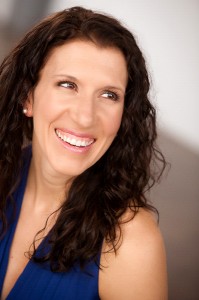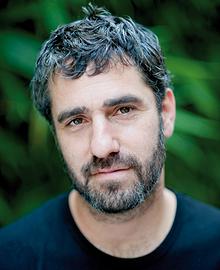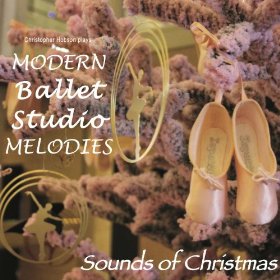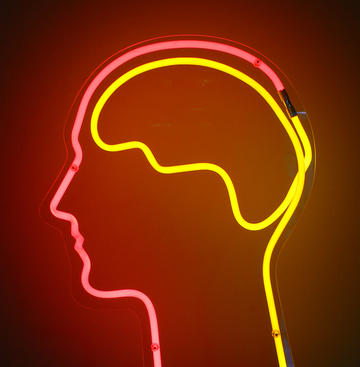We just wanted to take a moment to say thank you for reading! Have a wonderful holiday and join us for more dance content later in the week! -Catherine
Dance Promo Video: Dance Education Lab Open House
by Nel Shelby
I absolutely love working with Dance Education Lab (DEL)! This video shows off their amazing Open House with David Dorfman, Randi Sloan, Jody Arnhold and other top names in the dance world focused on the power of dance education. One of our dance video editors Ashli Bickford created this video for DEL.
Jody Arnhold is such an advocate for dance education. When I’m in Jody’s presence I feel like the power and importance of dance education is seeping from her bones. She has such a clear passion, and she collaborates with the best dance artists possible to help her express it.
I’d hear Ashli laughing out loud as she was listening through her headphones to what the dance educators were talking about while she edited. There’s a lot of joy in this video and you can feel it.
Dance Education Laboratory Open House Workshop from Nel Shelby on Vimeo.
Contributor Nel Shelby, Founder and Principal of Nel Shelby Productions, is deeply dedicated to the preservation and promotion of dance through documentation of live performances, fully edited marketing reels, live-stream capture, and documentaries and films that encapsulate the essence of nonprofit organizations.

Her New York City-based video production company has grown to encompass a diverse list of dance clients including American Ballet Theater II, Bill T. Jones/Arnie Zane Company, Gallim Dance, Gotham Arts, Kate Weare and Company, Keigwin + Company, Monica Bill Barnes Company, The New York Public Library for the Performing Arts, Shen Wei Dance Arts, Wendy Whelan and many more. She has filmed performances at venues throughout the greater New York area including The Joyce Theater, New York Live Arts, Lincoln Center, Symphony Space, St. Mark’s Church and Judson Church, to name a few.
For the past eight years, Nel has served as Festival Videographer for the internationally celebrated Jacob’s Pillow Dance Festival in the Berkshires. Each season at the Pillow, Nel’s responsibilities include documenting aspects of festival culture in addition to its 20 mainstage dance performances, filming and overseeing documentation of more than 100 free performances and events, managing two dance videography interns and an apprentice, and educating students about the technical and philosophical aspects of filming dance.
She now also serves as Resident Videographer at the Vail International Dance Festival where she spent her first summer creating five short dance documentary films about the festival in addition to documenting its events and performances. Her longer-form, half-hour documentary on Vail’s festival, The Altitude of Dance, debuted on Rocky Mountain PBS in May 2013.
This year, she is creating four short films for Wendy Whelan’s Restless Creature. In 2012, she collaborated with Adam Barruch Dance to create a short film titled “Folie a Deux,” which was selected and screened at the Dance on Camera Festival in New York City. Nel’s videos for the New Jersey Hall of Fame were shown to an audience of 2000 people, and she is currently editing a dance documentary featuring Nejla Y. Yatkin that she filmed for three-and-a-half weeks in Central America in 2010.Nel has a long personal history with movement – she has a B.A. in dance and is a certified Pilates instructor. She continues to train with world-renowned Master Teachers Romana Krysnowska and Sari Pace, original students of Joseph Pilates. In addition to her dance degree, Nel holds a B.S. in broadcast video. She often collaborates with her wonderful husband, dance photographer (and fellow 4dancers contributor) Christopher Duggan on creative projects with dancers in New York City and beyond. They live with their beautiful daughter Gracie in Manhattan.
Making “Mr. Gaga” – A Film About Choreographer Ohad Naharin

Today we are pleased to share with readers an interview with Tomer Heymann – the man behind countless hours of footage of the well-known dance figure Ohad Naharin. Heymann is working to create a film about the choreographer (Titled, “Mr. Gaga”), and it has been a project to which he has truly devoted himself.
1. How did you first meet Ohad Naharin?
I met Ohad Naharin more than twenty years ago on one of my vacations from military service. My aunt was a director of the Batsheva Dance Company at the time and I got a ticket to see Naharin’s piece “Kir” (“Wall”). This was the first piece he staged in Israel after his return from the U.S. I had never seen any dance before in my life, so I didn’t know what to expect.
But from the moment I saw the dancers move, the movement, their bodies, I just couldn’t take my eyes off it. By the end of the show, my eyes were sore from staring. It was phenomenal. Since then I haven’t missed one of Ohad’s productions: I have seen 25 of Ohad’s pieces, and more than once. A few years later, I also fell in love with a dancer from Batsheva.
One time, when I was working as a waiter in a coffee shop, I found the courage to introduce myself to Naharin.
2. What made you decide to do this film?
Even before I’d become a filmmaker, I felt I had to be close to this man. I had to understand how he creates something that magnificent, that inspiring. As we became friends I never abandoned the idea of making a film about Ohad Naharin. But only after I had made a few films, did I feel able to approach him and ask. This turned into an obsession, I stalked him. And only 7 years ago did he finally agree to let me bring a camera to the studio.
3. Did you find that filming dance was a challenge? Why or why not?
Before agreeing to participate in “Mr. Gaga” Ohad had many times told me that he forbids the filming of dance, as it goes against the momentary and fleeting nature of dance. This is why it was very challenging for me to shoot and edit this film. Where do you cut when you are editing a wholesome creation, a dance piece? I hope that I have managed to capture these moments, to make a collection of these moments that evolves into something larger than just the sum of its parts and also tells a story.
4. Where has the filming taken you in terms of following Ohad and Batsheva?
I have followed the company to seven different countries and spent countless hours in the studio in Tel Aviv. I’ve witnessed some dancers “grow up” with the company and Naharin, starting in the ensemble as kids 18-19 years old and then coming to the company to become extraordinary dancers–and then move on to other places. For example Sharon Eyal, once a prodigy of the company, and present a lot in our footage, now is one of the leading choreographers in Israel and Europe. Danielle Agami, another talented dancer now has her own successful company in L.A.
Being with Batsheva and Ohad Naharin really became a part of my life. It is safe to say that I spent 1 to 2 days of every week in the past seven years with them, not counting the hours I spend in the editing room.
“Mr. Gaga” is a film that took me one step further as a filmmaker, as a director – in terms of the responsibility it demanded from me, the amount of people involved, the volume of materials to be processed, and in terms of the time and resources I am investing. Ohad is such an influential figure in his field, and this puts a lot responsibility on me to deliver a film that will match his stature.
5. In your view, what stands out about this man and this company?
What is so interesting about Ohad Naharin is that he is one of the rare choreographers who appeals to a very wide range of audiences; not just regular dance fans who are familiar with classical ballet. His language and art are universal; it goes deep into something primal in our emotional selves–to our bodily awareness of ourselves. And he also does this without becoming “pop” or compromising his art. On the contrary, Naharin always finds new ways to recreate, to redefine his language.
6. What has been the biggest challenge in this process so far?
There was a lot of resistance. It may seem like a very rosy picture from the outside: We are friends, we are intimate and I am making a film about Ohad Naharin over seven years. But the opposite is true. Ohad is a difficult and complicated man and he gave me a hard time. There was a lot of resistance. Sometimes he would just say “cut” – as if he were the director – he would just “cut” the communication, stop cooperating with me, exclude me from his space. But in these moments I knew we were only spiraling deeper in our relationship, reaching yet another new level of intimacy.
7. Can you talk about a special moment you experienced while filming?
One example–I knew that Ohad had a TREASURE chest in his home: An enormous collection of still images, recordings, rehearsals, performances, family footage; his work in New York with Martha Graham, work with Maurice Béjart, his first wife – the legendary Alvin Ailey dancer, Mari Kajiwara, many many things. I was obsessed with these materials for years; I knew that I had to get them into the film somehow.
And suddenly this year I felt that we had reached the point where I could ask for it. I just told Ohad: “Give me this!” And he just gave it to me, all of it, just like that. He just handed over his past into my hands.
8. What do you think people might be surprised to learn about Ohad Naharin?
Ohad harbors a very sensitive nature under his tough appearance. People might also be very surprised to discover Ohad’s sense of humor and the relationships he builds with the dancers.
9. What does the next phase of this project look like, and when are you hoping to finish it?
Right now we are processing the footage shot over the past year and adding it to the rough cut. It includes Ohad Naharin working on his latest creation “The Hole” with the Batsheva Dance Company. Interesting footage because there was a special octagon stage created for this piece in one of the studios of the Suzan Dallal center in Tel Aviv, with dancers also standing right behind the audience and even under the very ceiling. It’s really a 360 degrees experience for the audience; something very special. We also filmed Ohad working on his repertoire in Finland and we travelled with him to New York.
At the same time there is a team of 5 very experienced researchers that are looking for any piece of archival material there can be found about Ohad Naharin or the company. We are finding unbelievable footage and all of that needs to be incorporated into the film as well.
Should we succeed with our Kickstarter campaign we will be able to acquire this footage and to proceed with the post-production. We are planning to release the film in spring 2014, in conjunction with the celebrations of the 50th anniversary of the Batsheva Dance Company in Israel and in the U.S.A.
Review: Modern Ballet Studio Melodies – Sounds Of Christmas
by Catherine L. Tully
What a delight! Christopher Hobson has really come up with lovely arrangements that work for ballet class here on “Sounds of Christmas“. I doubt it was an easy task to make these songs fit for barre and center, but the way he has done it–they sound totally natural.
 I can see this being a great fit for classes at any level. Children may recognize familiar Nutcracker tunes such as Waltz of the Flowers or the Dance of the Sugar Plum Fairy. They’ll certainly know favorites such as Rudolph the Red-Nosed Reindeer and Jingle Bells!
I can see this being a great fit for classes at any level. Children may recognize familiar Nutcracker tunes such as Waltz of the Flowers or the Dance of the Sugar Plum Fairy. They’ll certainly know favorites such as Rudolph the Red-Nosed Reindeer and Jingle Bells!
There is certainly plenty here for adults as well, with tracks such as Santa Baby and O Holy Night. Some are fun, some are beautiful–and all are extremely well crafted. Where a collection of Christmas music tends to make one worry about it being a campy bunch of poorly arranged tracks, instead Hobson has done the opposite and delivered a treasure trove of melodies for use in any ballet class.
Get yourself this Christmas gift–or give it to a teacher you know for the holiday. It’s terrific.
Disclosure: MBSM advertises on 4dancers
“Studio Thinking” In Dance
Throughout the school year I teach my students how to choreograph dances as works of art. We work on movement invention and manipulation, creating phrases, and finding form in movement. We discuss the elements of space, time, and energy, and how they facilitate the creation of climactic moments and communication within movement.
No matter how much we practice exploration and play as a class, when it comes time for small group choreography projects, it always seems that my students are so eager to get to the product that they pass by the process in the blink of an eye. I feel like a broken record sometimes when I say “explore, play, try it one way and then try it five more different ways to make sure you discovered what you feel to be the strongest way to dance it.” Placing greater emphasis on process verses product is something that I am constantly reinforcing with my students and the assignments given to them.
I try to create rubrics that are more open to interpretation however I find that if I do not give some specific instructions/structure then the students get confused. I recently assigned a small group choreography project to my students and while the rubric requires the use of various choreographic elements, it also said it had to be two minutes long. After one week of working in groups (they have three weeks to get this done) almost every group had close to two minutes of choreography done and they looked around at each other like “Wow we are almost done!”
This is when I stopped them and said “Now you need to explore, play, edit, and layer your movements with variety.” I told them week two needs to be about exploration and discussed what it meant to be in the process of dance making. I have started to discuss the studio thinking approach with my students in order to help them enter a fresh mindset of expectations. [Read more…]
- « Previous Page
- 1
- …
- 70
- 71
- 72
- 73
- 74
- …
- 260
- Next Page »







